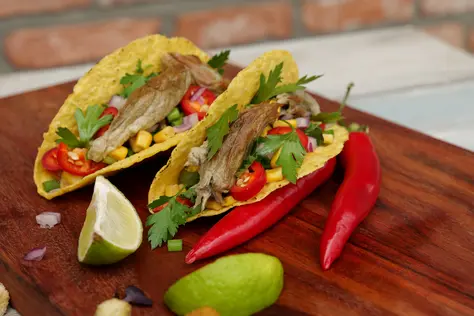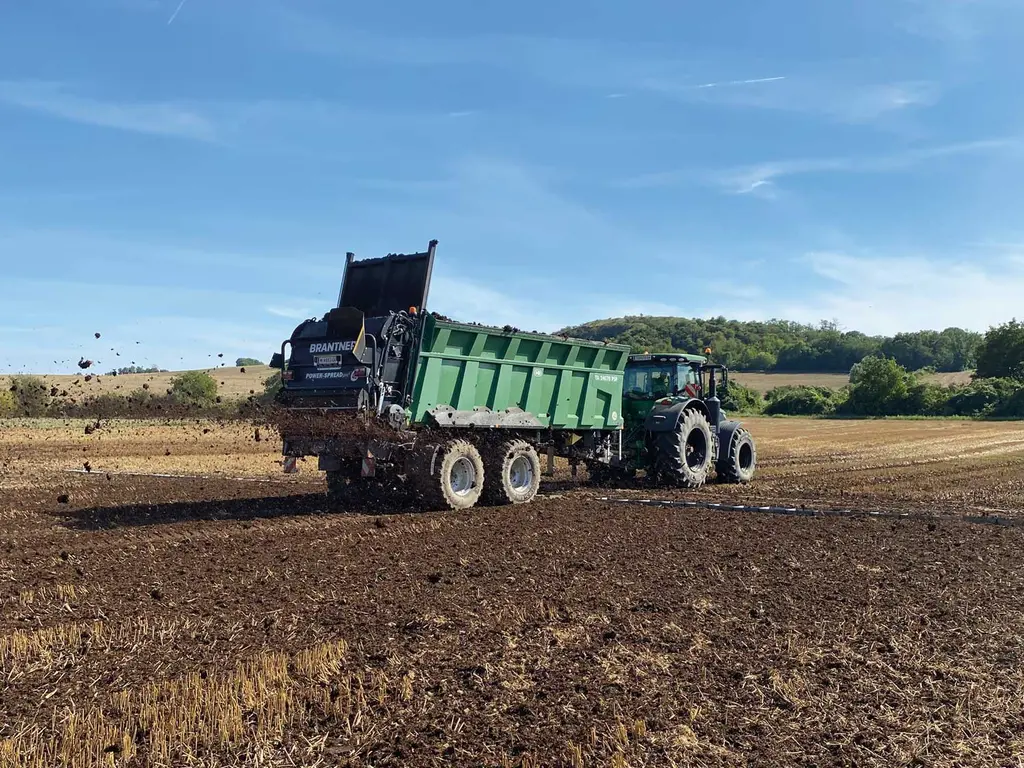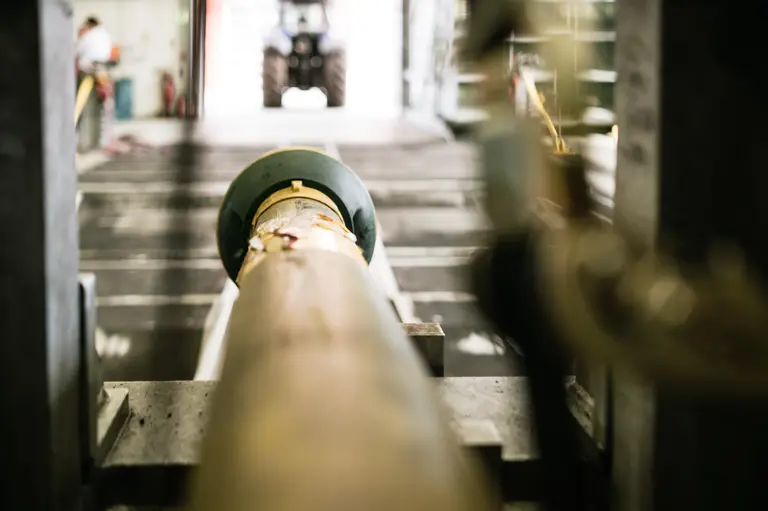Download print version
Test report 7257
The approval
A test mark “DLG-APPROVED for individual criteria“ is awarded for agricultural products which have successfully fulfilled a scope-reduced usability testing conducted by DLG according to independent and recognised evaluation criteria. The test is intended to highlight particular innovations and key criteria of the test object. The test may contain criteria from the DLG test scope for overall tests, or focus on other value-determining characteristics and properties of the test subject. The minimum requirements, test conditions and procedures as well as the evaluation bases of the test results will be specified in consultation with an expert group of DLG. They correspond to the recognised rules of technology, as well as scientific and agricultural knowledge and requirements. The successful testing is concluded with the publication of a test report, as well as the awarding of the test mark which is valid for five years from the date of awarding.
The BERGMANN TSW 6240 W with V-Spread was submitted to a DLG test that assessed the quality of distribution in cattle manure. The machine’s spreading system consists of two wide-spreading discs and two horizontal beaters. The test examined the quality of distribution as the machine was spreading cattle manure at rates of 10 t/ha and 30 t/ha. The manure had a dry matter content of 29.9 % and a bulk density
of 736 kg/m³. The criteria tested were the quality of distribution across rows and along rows.
Other criteria were not tested.
Assessment in brief
Spreading at rates of 10 t/ha and 30 t/ha in the DLG test, the BERGMANN TSW 6240 W with V-Spread achieved very good (+ +), good (+) and satisfactory (¡) results in distribution quality across and along rows. Table 2 is a synopsis of all results.
Table 1: Overview of results
| DLG quality profile | Evaluation 1 |
| Distribution quality in manure | ✔ |
1 Evaluation range: Requirements fulfilled (✔) / not fulfilled (X)
Table 2: Parameters defining the distribution quality in manure
| Streugut Stallmist | |||||
| Work width | [m] | 17 | 39 | 26 | 36 |
| Target rate | [t/ha] | 10 | 10 | 30 | 30 |
| Forward speed | [km/h] | 5.0 | 5.0 | 1.6 | 1.6 |
| Distribution across rows | |||||
| – Coefficient of variation (CoV) | [%]* | 9.9 (++) | 19.4 (+) | 10.0 (++) | 14.4 (+) |
| Distribution along rows using ExaRate | |||||
| – Coefficient of variation (CoV) | [%]** | 5.4 (++) | 6.7 (++) | ||
| – Dilation within the tolerance zone | [%]*** | 84.3 (++) | 82.9 (++) | ||
* In line with the DLG assessment scale that has been effective from May 2020 (distribution across rows): CoV > 15 % to ≤ 20 % = “o”; CoV > 10 % to ≤ 15 % = “+”; CoV ≤ 10 % = “+ +”
** In line with the DLG assessment scale that has been effective from May 2020 (distribution along rows): CoV > 15 % to ≤ 25 % = “o”; CoV > 10 % to ≤ 15 % = “+”; CoV ≤ 10 % = “+ +”
*** In line with the DLG assessment scale that has been effective from May 2020 (dilation within the tolerance zone): > 45 % = “o”; > 55 % = “+”; > 75 % = “+ +”
In May 2020, the DLG test commission on fertilisers and spreaders laid down revised and stricter standards for assessing the test results for this type of machinery. The revised standards reflect the technical progress that has been made in this field. These new standards supersede the previous standards applied by DLG in all its tests and in all DLG Test Reports prior to May 2020.
The product
Description and technical data
The BERGMANN TSW 2140 E with V-Spread is a universal spreader that features a moving floor and two spreading discs. The key specifications of the tested spreader are listed below (manufacturer information):
| Model | TSW 2140 W with V-Spread |
| Year of manufacture | 2018 |
| ID no. | 1352101M |
| Gross weight | 14,000 kg |
| Tongue load | 4,000 kg |
| Axle load | 10,000 kg |
| Kerb weight | 5,840 kg |
| Capacity | approx. 17.6 m³ |
| Running gear | single axle, unsprung;drawbar with hydraulic suspension and K80 hitch |
| Brakes | Dual-line air brake |
| Tyres | VF 480/95 R50 |
| Body dimensions | 1,420 mm x 1,800 mm (conical) x 5,900 mm (h x w x l) |
| Tractor spool requirement | 3 load-sensing couplers (feed, return, control) for the slurry gate, the tailgate and the moving floor (further functions available); 2 (double-acting) lines for the drawbar suspension system; |
| Electric sockets required | ISOBUS connector;7-pin light connector |
| Spreading system | Two horizontal 550 mm diameter beaters; Two 1,000 mm diameter spreading discs; 4 adjustable vanes per disc; frame-mounted, hard-wearing and interchangeable deflector plates; pto-driven (max. 1,000 rpm); slurry gate separating the load area from the spreading unit |
| Material feed | Hydraulic moving floor (4 chains with 60 channel-steel slats) (infinitely variable advance speed control) |
The method
The test method is based on the DLG test framework “Organic fertiliser spreaders” and the DIN EN 13080 standard “Manure Spreaders – Environmental Protection Requirements and Test Methods”.
The distribution across rows is measured with the help of 50 cm x 50 cm x 10 cm trays that are placed next to each other transversely to the test course. Then the tractor spreader combination travels down this test course, spreading the material. As the next step, the material collected in the trays is weighed and related to the area spread to determine the spread pattern without overlaps. The quality of distribution is expressed by the coefficient of variation (CoV). This reflects the accuracy of spreading the material across the rows, taking into account the rate of overlaps as the machine matches up with the previous pass. The CoV curve shows the point at which the accepted CoV threshold is undercut and also the range of the optimum work widths (smallest possible CoV).
The distribution along rows is assessed by measuring the mass flow. This is done by continuously measuring the load changes on the stationary machine as it is being emptied. These measurements are used to compute the following parameters: typical spreading rate during unloading, dilation within the tolerance zone (percentage of unloading time during which the spreading rate is within the accepted tolerance range), the optimum overlap at match-up and the CoV at optimum overlapping levels.
The smaller the CoV and the greater the dilation inside the tolerance zone, the better the distribution quality.
The test results in detail
Test
The test was carried out in March 2022 on a harvested silage maize field in the Wolgast region (Mecklenburg-Western Pomerania). Figure 2 shows the mobile test stand set up for measuring the distribution across rows by collecting the material in trays placed on the ground. Figure 3 shows the stationary spreader during emptying. This part of the test measures the mass flow changes during the unloading process. This was done using the integral weighing cells of the spreader which were validated by the DLG test engineers before the test. The cattle manure applied had a dry matter content of 29.9 % and a bulk density of 736 kg/m³. The spreader was operated by a Fendt Vario 936 and filled by a telehandler.
Setting up the spreader
The spreading rate of the BERGMANN TSW 6240 W with V-Spread is controlled by three factors: the speed at which the moving floor advances, the degree to which the slurry gate is opened and the forward speed of the tractor. The feed rate of the moving floor is set steplessly between 0.2 m and 5 m per minute. The floor chains are driven by a hydro motor. The aperture of the slurry gate is also controlled steplessly from the operator terminal. A slurry gate that is controlled relative to the distance travelled allows operators to enter the target aperture of the gate to the ISOBUS terminal and then retrieve the setting with a press of a button. The current position of the gate is indicated on the display screen and the information is used for controlling the application rate. If the spreader doesn’t have ISOBUS, the operator reads the current position of the gate on a scale which is mounted on a headboard and shows heights from 0 to 1.7 metres (fig. 5).
The spreading system on the BERGMANN TSW 6240 W with V-Spread is pto powered (max. 1,000 rpm). The distribution across rows is controlled by the spreading discs which are arranged in chevron formation (the so-called V-Spread) (fig. 6). Each disc has six vanes, each of which can be set to one of seven positions or angles.
These adjustments are made manually by refitting an M12 screw in one of the seven holes for each vane. Which setting is suitable for which material is explained in the operators’ manual.
The impact point on the discs is set with the help of a pendulum. The position of the pendulum in direction of travel (the impact point) is adjusted on a screw. The height of the pendulum and hence its distance from the discs is also variable. This is done hydraulically (optional) from the ISOBUS terminal and the current setting is indicated on the terminal display screen.
The manual also specifies the base settings for individual materials and various application rates. As the properties of the various materials usually vary greatly, operators are recommended to test the settings in an extra run and adjust them as necessary.
ExaRate
ExaRate is a rate compensating system which is integrated in the Isobus software. Its weighing cells measure continuously the changing load as the machine is being emptied. This information is sent to the software which compares the measurements with the default target application rate (t/ha).
This target rate is maintained by adjusting automatically the feed rate of the moving floor, thereby achieving an exact application rate despite varying conditions. ExaRate is also suitable for precision farming technology applications using application maps.
Distribution across and along rows spreading cattle manure
To apply manure at a rate of 10 t/ha and a workrate of 5.0 km/h and to accommodate further para-
meters and properties of the material, the advance rate of the floor chains was set to 0.8 m/min by the BERGMANN control unit. In the first run during which the work width was set to 39 metres, the CoV on the quality of distribution was smaller than 20 %.
Figure 7 shows the spread pattern for cattle manure applied at a rate of 10 t/ha without considering overlaps (distribution quality after two passes) and with considering overlaps.
The graph in figure 8 shows the relationship between the coefficient of variation and the work width for cattle manure spread at a rate of 10 t/ha. The CoV curve shows that the CoV is 9.9 % when the work width is set to 17 m. This CoV percentage is very good (+ +). The CoV is 19.4 % (satisfactory, ¡) when the machine is spreading at a width of 39 metres Only when the work width increases beyond 40 metres does the CoV exceed the 20 % line.
To apply manure at a rate of 30 t/ha and a workrate of 1.6 km/h and to accommodate further parameters and properties of the spread material, the advance rate of the floor chains was set to 1.0 m/min by the BERGMANN control unit. In the second test run in which the work width was set to 39 metres, the CoV on the quality of distribution was smaller than 20 %.
Figure 9 shows the spread pattern for cattle manure applied at a rate of 30 t/ha without considering overlaps (distribution quality after two passes) and with considering overlaps.
The graph in figure 10 shows the relationship between the coefficient of variation and the work width for cattle manure applied at a rate of 30 t/ha. The CoV curve shows that the CoV is 10 % when the work width is set to 26 metres. This CoV percentage is very good (+ +). The CoV is 14.4 % (good, +) when the machine is spreading at a width of 36 metres. Only when the work width increases beyond 40 metres does the CoV exceed the 20 % line.
Assessing the quality of distribution of muck along rows, the computed coefficients of variation at both rates were 5.4 % at 10 t/ha (very good (+ +) and 6.7 % at 30 t/ha (very good, + +). The dilation within the tolerance zone was 84.3 % (very good, + +) when spreading muck at 10 t/ha and 82.9 % (very good, + +) when spreading muck at 30 t/ha. The results in the test on application along rows are shown in figures 11 and 12.
The DLG test measured the universal spreader BERGMANN TSW 6240 W with V-Spread in cattle manure applying the material at rates of 10 t/ha and 30 t/ha. All tests on the accuracy of distribution across rows produced coefficients of variation of less than 20 %. Spreading cattle manure at a rate of 10 t/ha, the quality of distribution across rows was very good (+ +) when the work was 17 m and satisfactory (¡) when the work width was 39 m. Spreading cattle manure at a rate of 30 t/ha, the distribution across rows was very good (+ +) at a work width of 26 m and good (+) at a work width of 36 metres.
The results in the DLG tests on the quality of distribution of cattle manure along rows at rates of 10 t/ha and 30 t/ha are all very good (+ +). The dilation within the tolerance zone was 84.34 % (very good (+ +) when the application rate was 10 t/ha. The coefficient of variation was 5.43 % (very good, + +) when overlapping was optimal. The dilation within the tolerance zone was 82.88 % (very good (+ +) when the application rate was 30 t/ha. The coefficient of variation was 6.69 % (very good, + +) when overlapping was optimal. The manual specifies the base settings for various materials and application rates. As the properties of the various materials usually vary greatly, operators are recommended to test the settings in an extra run and adjust them as necessary.
Based on the above test results, the BERGMANN TSW 6240 W with V-Spread universal spreader is awarded the DLG APPROVED quality mark after passing the partial test ‘Quality of distribution in cattle manure’ in 2022.
Manufacturer and applicant
Ludwig Bergmann GmbH
Hauptstraße 64-66
49424 Goldenstedt, Germany
Test implementation
Testing agency
DLG TestService GmbH,
Gross-Umstadt test site, Germany
The tests are conducted on behalf of DLG e.V.
DLG test framework
Manure spreaders and secondary nutrient fertiliser spreaders (effective from May 2020)
The DLG panel of experts
Prof. Hans W. Griepentrog, University of Hohenheim
Prof. Nils Fölster, University of Osnabrück
Dr. Harm Drücker, Chamber of Agriculture of Lower Saxony
Dr. Horst Cielejewski, Chamber of Agriculture of North Rhine-Westphalia
Dr. Fabian Lichti, State Institute of Agriculture Bavaria
Peter Seeger (farmer), Otzberg
Frank Reith (farmer), Groß-Umstadt
Sven Schneider (farmer and contractor), Brensbach
Department
Agriculture
Division head
Dr. Ulrich Rubenschuh
Test engineer(s)
Dipl.-Ing. agr. Georg Horst Schuchmann *
* Author
Contact us
DLG TestService GmbH - Groß-Umstadt location • Max-Eyth-Weg 1 • 64823 Groß-Umstadt • Tel: +49 69 24 788-600 • tech@DLG.org

























